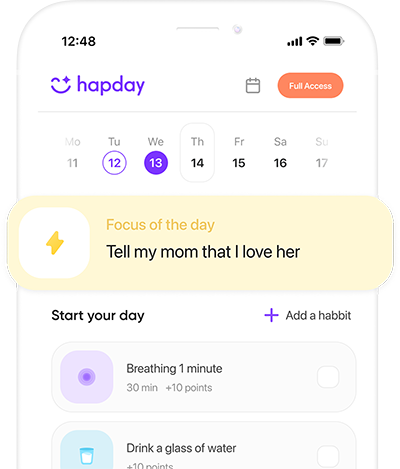Table of Contents
ASD: More Than Meets the Eye
Think of ASD like this huge, sprawling spectrum—everyone’s different. Imagine a crowded marketplace where no two stalls are the same. Experts have tried to organize it into three “levels” of needs:
- Level 1: Routine is a friend here. These folks generally find the whole social thing a bit like trying to understand why the chicken crossed the road—just leave it alone, already.
- Level 2: More help is needed. If socializing were a high school subject, they’d require a little extra tutoring.
- Level 3: Social interactions? Nope! Picture a cat avoiding water. Major communication gaps and a love-hate (mostly hate) relationship with change dominate this level.
The diagnostic book, as we should call it, includes sensory issues and an insane focus on things most of us might miss—a kind of superpower, yet double-edged.
Mental Health Hurdles
Now for the fun part—sarcasm, folks. The co-stars in this show are anxiety, depression, OCD, ADHD, and sleep madness. I mean, who needs sleep anyway, right? Oh wait…
Anxiety
Here’s a shocker: Social unpredictability ramps up the anxiety for many with ASD. Think first date jitters—times ten, 24/7. Up to 40% of children with ASD face anxiety, says a 2009 study.
Depression
The downer side of autism. A whopping 20-30% of adults with ASD fall into this black hole. Social walls, bullying, ye old low self-esteem—depression, my friends, loves to make home here, according to one study I skimmed through (Hudson et al., 2019).
OCD
It’s a tangled web of repetitive actions. Is it ASD behavior or full-on OCD? Hard to tell sometimes. About 17% of individuals with ASD are said to also have OCD symptoms.
ADHD
Imagine trying to sit through a two-hour lecture with neon lights flashing. 30-60% of kids with ASD also juggle ADHD. What a party, huh?
Sleep Disorders
Forget the luxury of a good night’s sleep—with estimates of 80% facing disruptions, according to sleep researchers. Endless tossing and turning is the name of the game.
Grit, Guts, and Strategies
Life ain’t easy, but let’s talk about what can smooth the rocky path.
Therapy
CBT, ABA, yadda yadda. They all sound impressive, right? Cognitive Behavioral Therapy apparently helps reduce anxiety. The magic lies in rearranging thought patterns—think filing cabinet of the mind; messy to orderly-ish.
Social skills training is like a social GPS, guiding ASD individuals through what feels like alien terrain—because, let’s face it, for them, it often is.
Meds
No ‘magic pill’ for autism, but anxiety and depression can be tackled. SSRIs and ADHD meds offer some relief.
Lifestyle Hacks
A little less sugar here, more Zzz’s there, maybe. Diet, exercise, sleep routines. Sure, they sound straightforward, but implementing them is like coaxing a toddler to eat broccoli—dreaded but, boy! Worth it if you manage it.
Mindfulness
This is where you tell your brain to chill. Meditation, a few deep breaths, the works. Mindfulness can bring about the zen in chaos, studies say (Ridderinkhof et al., 2018).
The People and the Space
Families, schools, jobs—everyone plays a part. Create a welcoming space and, more importantly, lasting relationships that can stand the test of challenges.
Tech Magic
Technology, anyone? Speech devices and skill apps—each little innovation equals a step forward, a little joy in the journey.
Wrapping It Up
We’ve sketched an idea of what mental health linked to ASD is like, and while everything can feel like climbing Mount Everest—it’s doable. With a cocktail of therapy, tweaks to daily life, and the right support, people with ASD can go from coping to being content, even thriving. It takes a village, folks—a collaborative hustle. With more understanding and research—gosh, who knows? We might just light the way for those on the spectrum, helping them lead richer, fuller lives. Moonshots? Maybe not. But we’re landing humans on the moon, so why not reach for better happy for everyone, right?


This article really sheds light on the diverse experiences of those with autism. It’s fascinating how the spectrum encompasses such a range of behaviors and needs. I especially appreciate the breakdown into levels. It makes it easier to understand that not everyone experiences autism in the same way. What are some strategies you’ve found helpful for supporting someone at each level?
I think creating a structured environment is key, especially for Level 1 individuals. Routine can provide a sense of stability that eases anxiety.
I wonder if there are specific resources or communities that focus on each level? That could be super helpful!
Wow, mental health hurdles sound like a wild roller coaster! It’s kind of darkly funny how they all seem to come together in one package for people with ASD. Maybe we should have a support group called ‘The Anxiety Club’ or something! 😂 But seriously, it’s crucial to talk about these issues openly.
This post highlights an important aspect often overlooked—the link between autism and mental health challenges like depression and anxiety. The statistics are alarming, but they highlight the need for greater awareness and support systems in place for those affected.
‘Support systems’ is such an essential phrase here! I believe community initiatives could make a big difference.
‘Tech Magic’? Love it! Technology definitely opens new doors for communication and skills development in people with ASD. I’ve seen so many apps designed specifically for this purpose; it’s amazing how they can transform lives!
‘Mindfulness is where you tell your brain to chill’? That’s my new favorite line! Seriously though, mindfulness seems like it could benefit everyone, not just those with ASD. Imagine if we all took a moment to breathe deeply before reacting—world peace might be achievable after all!
‘Grit, Guts, and Strategies’ really captures the essence of dealing with ASD! I love how you emphasized practical approaches like lifestyle changes alongside therapy options; these small shifts can truly make significant impacts over time.
‘80% facing sleep disruptions’ sounds alarming! It’s shocking how little attention sleep disorders get compared to other symptoms of ASD when they can drastically affect overall well-being.
‘Sleep is so vital for mental health—I’m curious what methods work best for improving sleep hygiene among those with ASD.’
Yeah! I’ve read about some techniques like weighted blankets or consistent bedtime routines that help; would love to hear more experiences!
It’s interesting how social situations can create anxiety rather than joy for many with ASD—reminds me how important it is to foster understanding within communities!
The idea that different individuals need tailored strategies really resonates! It’s like we need personalized blueprints instead of one-size-fits-all solutions—it’s about time we acknowledge everyone’s unique journey.
This article is a fascinating read! I love how it breaks down the complexities of ASD into relatable terms. The comparisons to everyday scenarios like a crowded marketplace make it easier to understand. It’s great to see mental health issues being discussed openly. Keep up the good work!
Honestly, this post seems overly simplistic and a bit condescending. It feels like the author is trying too hard to be funny rather than addressing serious issues. Mental health isn’t a joke, and trivializing it with sarcasm undermines the struggles that many face daily.
This article provides valuable insights into ASD and its connection with mental health challenges. The statistics shared about anxiety and depression among those with ASD are particularly eye-opening. It’s crucial that more people understand these nuances to foster better support systems.
‘A little less sugar here, more Zzz’s there’—are we really reducing complex mental health issues to lifestyle tips? While diet and sleep are important, this article seems dismissive of deeper psychological challenges individuals with ASD face. Let’s not oversimplify.
‘Socializing for Level 3 is like trying to teach a cat how to swim’—now that’s hilarious! But on a serious note, while humor is great for engagement, we should never forget the real struggles behind ASD. Balancing fun with facts is key.
‘Tech Magic’? Really? It’s nice that tech can help but let’s not act like it’s some kind of cure-all for ASD-related issues. Real understanding comes from human connection and support rather than relying solely on gadgets.
‘It takes a village’? Absolutely! But what happens when that village isn’t equipped or educated? We need more advocacy for better training in schools and workplaces so everyone can support those on the spectrum effectively.
‘Mindfulness can bring about zen in chaos.’ That’s the dream, isn’t it? If only life were as simple as doing deep breaths! Still, I appreciate how the author tries to inject some positivity amidst all these challenges; it’s refreshing!
‘Therapy sounds impressive, right?’ Sure does! But let’s acknowledge that not everyone has access to these resources. This piece could benefit from emphasizing accessibility in mental health services as part of addressing ASD challenges.